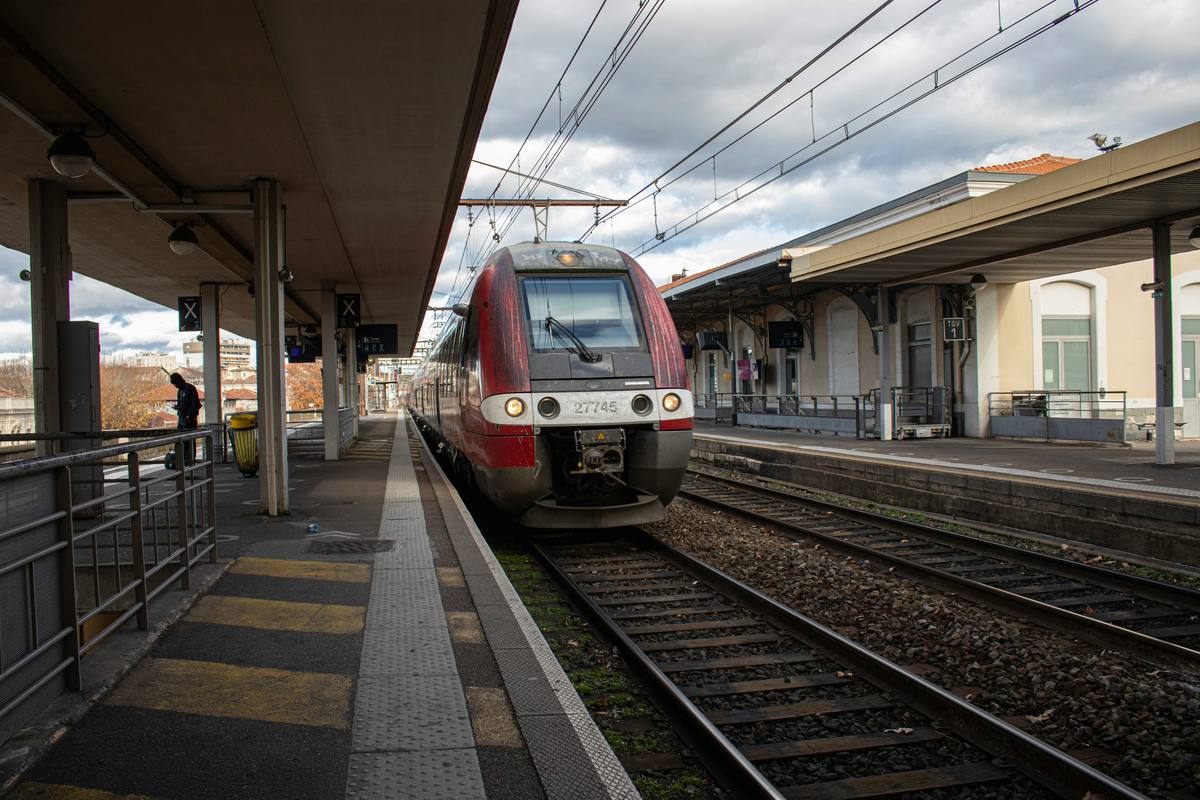The Ultimate Guide to Launching Your Metro Stations Empire
Embarking on the journey to establish a Metro Stations business is akin to setting off on an exhilarating adventure in the urban landscape. With cities expanding at an unprecedented rate, the demand for efficient, reliable public transportation has never been higher. But before diving into this venture, it's critical to understand the vast landscape of regulatory requirements, strategic location planning, and funding avenues. Crafting a detailed business plan that outlines your vision, target market, and competitive analysis is paramount. This plan will serve as your roadmap, guiding you through the intricacies of developing a network that's not only functional but also profitable. Embrace innovation and sustainability as your guiding stars, ensuring your metro stations stand out in a crowded market.
Imagine walking into a beautifully designed metro station, where every detail reflects thoughtful planning and a commitment to passenger experience. 
The Challenge of Initial Capital
When you're exploring how to start a venture in the metro stations business, the first roadblock you typically encounter is securing the initial capital. Building or acquiring infrastructure for a metro station requires a significant investment. This includes not just the construction costs but also the technology and systems needed to operate efficiently. Moreover, there's the land acquisition cost, which can be substantial depending on your location. Finding investors or securing loans with favorable terms becomes crucial at this stage.

Navigating Regulatory Requirements
Another challenge that often comes up involves navigating through the maze of regulatory requirements. Each country, and often each city, has its own set of regulations governing public transportation systems. This includes safety standards, accessibility requirements, and environmental impact assessments. Compliance with these regulations is non-negotiable and can be time-consuming and complex. Hiring experts who specialize in public transportation law and policy can provide invaluable guidance through this process.

Designing for Efficiency and Accessibility
When it comes to how to start thinking about the actual layout and operation of your metro stations, efficiency and accessibility should be at the forefront. The design phase is critical in ensuring that passenger flow is smooth and that all accessibility needs are met. Considerations include easy navigation for people with disabilities, efficient ticket purchasing systems, and minimal transfer times between lines. Additionally, incorporating digital signage and real-time updates can significantly enhance passenger experience. Engaging with a seasoned architect who understands public transportation dynamics is key.
Adopting Cutting-Edge Technology
In today's digital age, adopting cutting-edge technology is no longer optional; it's imperative for success in the metro stations business. From contactless payment systems to advanced security surveillance technologies, investing in innovation can drastically improve operations and customer satisfaction. Furthermore, leveraging big data analytics helps in optimizing routes, predicting maintenance issues before they arise, and customizing services according to commuter patterns. However, staying ahead of technological advancements requires continuous learning and investment. Partnering with tech firms specializing in public transport solutions can offer a competitive edge.

Boost campaigns with 250+ editable templates. Save, reuse, and wield design tools for business growth.
Try it for FREE!Fostering Community Relations
A crucial aspect often overlooked by new entrants is fostering positive relations with the community. A metro station can significantly impact the surrounding area--both positively by boosting local economy and mobility but potentially negatively through construction disruptions and increased foot traffic. Early engagement with community leaders and local residents to address concerns and highlight benefits is essential. Implementing community feedback into planning and design can lead to a more accepted and successful project. Remember, building trust takes time but it pays off in long-term support for your project.
Ensuring Sustainable Operations
Sustainability is no longer just a buzzword; it's a vital component of modern businesses, especially in public transportation. When considering how to start on the path towards sustainable operations for your metro station business, think renewable energy sources, eco-friendly materials in construction, and waste reduction strategies. Initiating green policies not only contributes to environmental conservation but also appeals to environmentally conscious commuters. Additionally, sustainability practices can lead to operational cost savings over time through efficiencies like lower energy consumption. Collaboration with environmental consultants during the planning phase ensures that sustainability goals are achievable and integrated seamlessly.

Marketing Your Metro Station
Launching your metro station isn't just about completing construction; it's also about how you market it to potential users. Effective marketing strategies ensure that potential passengers are aware of your services before launch day arrives. This might involve engaging marketing campaigns across various media platforms highlighting convenience, speed, safety, and any unique features your service offers. Social media platforms provide excellent avenues for real-time engagement with your target audience. Strategic collaborations with local businesses can also create buzz and anticipation around your new venture.
To ensure all your marketing materials stand out while maintaining brand consistency across all communication channels consider using tools like Desygner. Its intuitive design platform allows even those without professional design skills to create visually appealing content quickly--be it promotional posters for social media or informational brochures for distribution at community events.
## The Significance of a Strong Start for Metro Stations BusinessesStarting a business, particularly in the bustling world of metro stations, is no small feat. It requires precision, foresight, and an unwavering commitment to excellence. The initial phase of launching your Metro Stations business is not just about laying the foundation--it's about setting the tone for everything that follows. Here's why getting it right from the start can make all the difference.### Crafting a Memorable First ImpressionFirst impressions are lasting impressions. In the fast-paced environment of metro stations, where thousands of commuters pass through daily, starting with a strong, positive impression can set you apart from competitors. A well-conceived startup phase ensures your business stands out as reliable, user-friendly, and distinctly valuable right from the get-go. This memorable introduction to your brand builds immediate trust and recognition among your target audience.### Establishing Operational ExcellenceA meticulously planned startup process lays down the operational framework for efficiency, safety, and customer satisfaction. By prioritizing these aspects at the outset, you're effectively minimizing potential roadblocks and setting up for seamless day-to-day operations. This level of preparedness ensures that your metro stations business operates like a well-oiled machine, ready to adapt and thrive even in the face of unexpected challenges.### Fostering Positive Customer RelationshipsThe initial interactions customers have with your business significantly influence their ongoing relationship with your brand. Starting strong means offering exceptional service from day one--service that's quick, efficient, and courteous. This early demonstration of your commitment to customer satisfaction cultivates loyalty and positive word-of-mouth, both invaluable assets in today's competitive landscape.### Accelerating Growth and InnovationWhen you start on the right foot, you're not just playing catch-up; you're setting the pace. A solid beginning allows for a focus on growth and innovation rather than rectifying initial missteps. It empowers businesses in the metro stations sector to quickly move beyond survival mode into exploring new opportunities for expansion and technological advancements, ensuring they stay ahead in a rapidly evolving industry.### Building a Resilient Brand ImageFinally, how you start shapes your brand's image and resilience. A business that begins with clarity of vision and purpose is better equipped to navigate market changes and consumer trends confidently. This resilience becomes a part of your brand's identity--known not just for surviving challenges but thriving through them.In conclusion, starting correctly isn't merely about avoiding pitfalls; it's about maximizing potential. For Metro Stations businesses aiming not just to exist but to excel, there's no substitute for a thoughtful, well-executed launch. Such an approach promises not just immediate gains but sets the stage for long-term prosperity, innovation, and leadership in an ever-evolving sector.

Concluding Thoughts on Starting a Metro Stations Business
Embarking on the journey of starting a metro stations business requires meticulous planning, unwavering dedication, and a profound understanding of the transportation industry. The road ahead is challenging yet immensely rewarding for those prepared to navigate the complexities of urban transit needs. As we wrap up our discussion, it's crucial to recapitulate the essential steps and considerations that potential entrepreneurs must keep in mind.
Firstly, conducting comprehensive market research is indispensable. Understanding the demographics, commuting patterns, and unmet needs within your target locations will guide your strategic decisions. Furthermore, securing funding and navigating the legal framework are critical steps that demand attention to detail and patience. Collaborating with city planners and stakeholders can also provide valuable insights and foster relationships that will be beneficial in the long run.
Equally important is the focus on innovation and sustainability. In today's environmentally conscious society, integrating green technologies and promoting eco-friendly transportation solutions can set your business apart from competitors. Additionally, leveraging advanced technology for operational efficiency and enhanced customer experience cannot be overlooked.
- Comprehensive market analysis
- Securing adequate funding
- Navigating legal requirements
- Partnership with city planners
- Focus on sustainability
- Incorporation of cutting-edge technology
- Exceptional customer service strategies
- Promoting your services effectively with tools like Desygner
To ensure your metro stations business stands out in a competitive landscape, investing time in creating a robust marketing strategy is paramount. Utilizing creative platforms such as Desygner for your promotional materials can significantly enhance your visibility and appeal to a broader audience. As you move forward, remember that success in this venture requires persistence, adaptability, and continuous learning.
In conclusion, starting a metro stations business presents a unique opportunity to contribute to sustainable urban development while capitalizing on the growing demand for efficient public transportation options. With careful planning, strategic partnerships, and a commitment to innovation, aspiring entrepreneurs can indeed make a significant impact. For those ready to take their marketing efforts to the next level, don't forget to sign up at Desygner.


